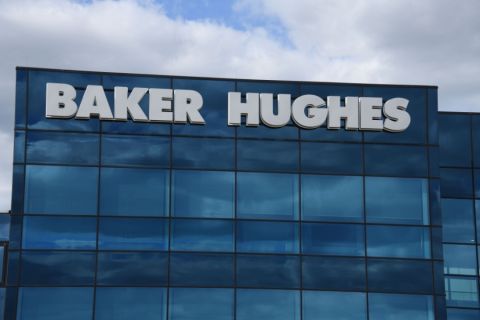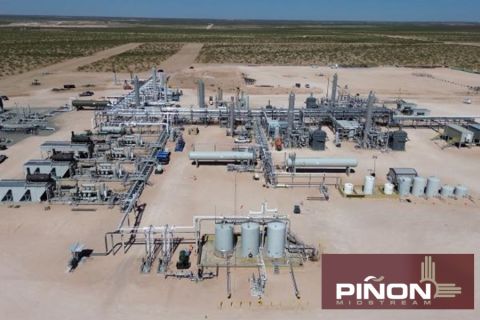While the supply of oil and gas assets for sale has increased in the past few years, it is still not enough to satisfy demand from buyers who are flush with capital, says Adrian Goodisman, managing director of Scotia Waterous' Houston office. He spoke at the fifth annual A&D Strategies and Opportunities conference in Dallas recently, sponsored by Oil and Gas Investor and A&D Watch newsletter.
In 2005, some $50 billion of cash flow was chasing $15 billion of assets for sale, he said.
Transactions seem to be getting larger. Since the second half of 2004, the average quarterly transaction value has been about $4.3 billion, or more than double the four-year quarterly average recorded before then, he added. "Values are getting larger, but the number of deals has not grown that much more."
Roughly 50% of the dollars spent are by large-cap buyers-companies whose market cap is greater than $5 billion. Examples include Apache Corp.'s purchase of Gulf of Mexico shelf assets from BP and Chesapeake Energy's acquisition of two large producers in the Barnett Shale earlier this year.
But large-caps also have been the leading sellers so far in 2006, as Pioneer Natural Resources, Kerr-McGee, Noble Energy and Cabot Oil & Gas have each divested Gulf of Mexico shelf assets to others.
There are two types of private sellers, Goodisman said. One is the family-owned E&P company that sees this as a very good time to harvest, given the high prices buyers are willing to pay in today's competitive, seller's market.
The other type is the private-equity-backed producer. Many of these are bringing their assets to market earlier in the build-and-sell cycle than ever before. Some sell in under two years, whereas the time frame used to be four to six years.
Since 2001, asset values have grown tremendously. In that year, the average price paid for a proved barrel of oil equivalent was $5.14, but in first-half 2006, that value had more than tripled to $15.96.
"Valuations continue to increase for both oil and gas deals, but for the first time since 2001, we are actually paying more for oil reserves in the ground than for gas," he said.
The priciest areas in which to buy proved reserves? Since third-quarter 2005, they are the Gulf of Mexico, where assets are selling for an average $3.37 per proved thousand cubic feet equivalent; the ArkLaTex region, $2.69; and the Gulf Coast onshore, $2.46.
According to Scott Richardson of Houston-based asset-broker Richardson Barr & Co. and who also spoke at the conference, the most acquisitive companies in 2005, based on dollars spent, were, in order: Occidental Petroleum (which acquired Vintage Petroleum for $3.8 billion in cash and stock), Chesapeake Energy, Hydro, Cimarex Energy, XTO Energy Inc., El Paso Corp., privately held EnerVest Management Partners Ltd., Whiting Petroleum, Forest Oil and Range Resources.
Vaughn Vennerberg, senior executive vice president of XTO Energy, said, "You have to have passion to do deals day in and day out."
He has personally signed some 1,700 purchase-and-sale agreements in 20 years. "Acquisitions are not an event; they are part of our everyday activity. Relationship building is how you get these deals done. And we will bug you to death," he said.
In the past 4.5 years, XTO has completed 435 transactions for a total consideration of $5.2 billion.
Recommended Reading
Baker Hughes to Supply Compression Trains for Algerian Field
2024-05-23 - Baker Hughes will supply 20 compression trains, which are expected to boost gas production at Alergia’s Hassi R’ Mel gas field.
Piñon Midstream Increases Delaware Basin Sour Gas Treating Capacity
2024-05-22 - Piñon Midstream plans to expand operations at Lea County, New Mexico, facility, the company said.
Developer Seeks Permit to Send US Gas to Mexico for LNG Exports
2024-05-22 - The project is the latest in a series of developments to convert U.S. gas into LNG and export it from Mexico's Atlantic and Pacific coasts to meet global demand.
Trans Mountain Pipeline Begins Work
2024-05-21 - The first oil cargo tanker, Suncor’s Dubai Angel, will load at the expanded Trans Mountain Pipeline’s crude terminus in Vancouver.
Phillips 66 to Acquire Pinnacle Midstream for $550MM
2024-05-21 - Phillips 66 said the deal to acquire Pinnacle Midstream was a strategic move to expand its natural gas gathering and processing assets in the Midland Basin.




